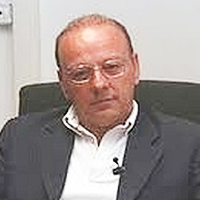Precessional Motion Emerging from Relativistic Component of External Force
Published on: 25th October, 2024
The external force in the relativistic equation of motion can be separated into two components: Fr and Fp. The first is expressed by the physical force divided by the square of the relativistic Lorentz factor, i.e γ2. This force dominates for non-relativistic velocities and vanishes for velocities approaching the speed of light c. On the other hand, the second term increases from zero with increasing velocity and dominates for velocities close to c. It is then a purely relativistic component. The characteristic feature of this component is its zero power, Fp ⋅ v = 0, but it is responsible for the relativistic precession. The effect was confirmed by numerical solutions of the equation of motion. Relativistic formulas for the precession frequency for point objects moving in selected fields of central forces were also derived analytically. It has been shown that for weak gravitational interactions, the correction for relativistic precession is small, negligibly small for Earth, and relatively small, though measurable, for Mercury. In turn, for the microworld and electrostatic forces (e.g., for the hydrogen atom), relativistic precession can fundamentally affect the movement of the electron.
Metabolic Syndrome, Cardiovascular Disease and the Hair Growth Cycle: Addressing hair growth disruptions using Nourkrin® with Marilex® as a proteoglycan replacement therapy: A concise review
Published on: 23rd May, 2018
OCLC Number/Unique Identifier: 7671837063
Alopecia is associated with an increased risk of coronary heart disease, and it appears that there is a relationship between the degree of hair loss and the risk of coronary heart disease, meaning, the greater the severity of alopecia, the greater the risk of coronary heart disease. Alopecia is also associated with an increased risk of hypertension, hyperinsulinemia, insulin resistance, metabolic syndrome as well as elevated serum total cholesterol and triglyceride levels. It has not been definitively established whether patients with androgenetic alopecia have a higher cardiovascular risk or prevalence of metabolic syndrome, and results of recent studies indicate that androgenetic alopecia patients do not show differences in insulin resistance or the prevalence of metabolic syndrome. However, androgenetic alopecia patients do show a higher cardiovascular risk, characterised by increased inflammatory parameters and Lp(a) levels. Data collected from female populations are scarce, but it would be interesting to extend our clinical knowledge with this type of data to further our understanding of the connection between androgenetic alopecia, metabolic syndrome and cardiovascular risk. The divergence in results from different studies done in this context may simply be a result of the composition of the study populations with respect to age, gender, severity of alopecia, sample size and perhaps ethnicity. In this connection, a large group of androgenetic alopecia patients is necessary, including different representative groups and varying severities of alopecia. Furthermore, it is recommended that all women and men with androgenetic alopecia be thoroughly examined and that lifestyle changes are made early on to reduce the risk of various problems associated with metabolic syndrome, since androgenetic alopecia can be considered an early marker of metabolic syndrome.
Linear IgA bullous dermatosis in a child successfully responding to oral antibiotics
Published on: 6th December, 2018
OCLC Number/Unique Identifier: 7949734217
Linear IgA bullous dermatosis (LABD) is a rare, chronic, autoimmune bullous dermatosis affecting young children and adults. The exact pathogenesis of this disease is still unknown, although both humoral and cellular immune response are involved. Clinically, it may show heterogeneous skin manifestations. However, it is characterized histologically by linear immunoglobulin A (IgA) deposits over the basal membrane, causing subepidermal blisters. Studies on LABD are relatively sparse and most of the publications are small series or single case reports. Several treatments are reported in literature, however, they should be used with care due to the risk of side effects. We report a case of linear IgA dermatosis with generalized lesions in a 7 year old child, with good outcome under dermocorticoids and antibiotics.
Safety and effectiveness of laparoscopic management in 210 patients with erosion of adjustable Gastric banding
Published on: 21st November, 2017
OCLC Number/Unique Identifier: 7317595343
Background: The band erosion (BE) is defined as the partial or complete movement towards the lumen of the stomach, is also known as migration, gastric incorporation and gastric inclusion. The presentation of this complication involves failure of bariatric procedures being ineffective and consequently requires the removal of the laparoscopic adjustable gastric banding (LAGB), usually through laparoscopic surgery.
The objective of this study is to describe the clinical presentation, diagnostic methods, surgical procedure, postoperative evolution in the integral treatment of BE. Material and Methods: We captured the data of patients with BE since January 2010 to October 2017. Database included the year of patient care, age, and sex, BMI before band placement, percentage of excess weight loss, number of device adjustments, clinical data and surgical procedure performed for resolution.
Results: A total 379 LAGB complications were diagnosed in our Institution; 210 patients with BE were diagnosed and treated, the average age was 39 years; range from 19 to 66 years, sex was 178 women and 32 men. The diagnosis was endoscopic in the 210 patients (100%). The surgical procedure to solve the problem was: to remove the LAGB, the fistulous orifice was closed and patch of omentum. The hospital stay was 3-5 days. The motility was zero. Complications were minor in 3% of the 210 patients (fever, atelectasis, wound infection). One patient was re-operated for evolving to residual abscess.
Conclusions: The BE is a serious failure in bariatric surgery. The resolution in this group of patients was to remove the band, direct closure of the fistulous orifice with patch of omentum. The surgical technique that was performed in this complication is safe, effective and easily reproducible.
Role of Perianesthesia Nurses in Enhanced Recovery After Surgery (ERAS) Protocols: A Narrative Review and Comparative Outcomes Analysis
Published on: 10th September, 2025
Background: Enhanced Recovery After Surgery (ERAS) protocols are comprehensive, interdisciplinary frameworks aimed at minimizing surgical stress, standardizing perioperative care, and expediting recovery. Perianesthesia nurses, who operate in preoperative assessment units and post-anesthesia care units (PACU), play a vital role in ensuring the integrity of ERAS implementation. Objectives: To compile and analyze current evidence regarding the impact of perianesthesia nursing care on surgical outcomes pre- and post-anesthesia, and to compare outcomes of ERAS with traditional care practices. Methods: A narrative review of ERAS guidelines along with recent meta-analyses and clinical trials (2016–2025) focusing on nursing-sensitive processes (such as patient education, anxiety management, adherence to PONV prophylaxis, multimodal pain management, early mobilization, and readiness for discharge) as well as outcomes (including length of hospital stay, complications, readmission rates, and time to PACU discharge). Results: Meta-analyses across different specialties indicate that the adoption of ERAS correlates with reduced hospital stays and a decrease in complications without an increase in readmission rates or mortality. Processes led by perianesthesia nurses—including the education of patients and setting their expectations, adherence to carbohydrate loading and fasting guidelines, maintenance of normothermia, PONV prophylaxis based on risk assessment, opioid-sparing pain management, protocols for the removal of urinary catheters/lines, and encouragement of early oral intake and ambulation—contribute to these positive outcomes. Research also reveals that ERAS programs facilitate quicker fulfillment of discharge criteria in the PACU. Conclusion: Perianesthesia nurses implement ERAS protocols at the bedside, effectively converting these guidelines into dependable practices that enhance recovery milestones and diminish complications. Ongoing benefits are contingent upon systematic documentation, effective interprofessional communication, and continuous performance audit and feedback.
Various Theories of Fast and Ultrafast Magnetization Dynamics
Published on: 21st November, 2024
The background of my paper is that magnetization dynamics is a very important subject of basic and technological research. The purpose of the paper is to review various theories of magnetization dynamics. There are many important technological applications of magnetization dynamics.
Do Fishes Hallucinate Human Folks?
Published on: 11th August, 2017
OCLC Number/Unique Identifier: 7286344215
Hallucinogenic fishes are fishes that can create hallucinations if their tissue is ingested. These incorporate certain types of fish found in a several parts of the tropics. The impacts of eating hallucinogenic fishes are rumored to be comparative in a few viewpoints to lysergic acid diethylamide (LSD) or dimethyltryptamine (DMT). The encounters may incorporate distinctive sound-related and visual hallucinations. This has offered ascend to the collective common name “dream fish” for hallucinogenic fish. Sarpa salpa, a species of sea bream, is commonly claimed to be hallucinogenic. In 2006, two men who apparently ate the fish experienced mind flights going on for a few days. It is misty whether the poisons are delivered by the fish themselves or by marine algae in their diet.
Cytology and DNA Analysis of Ameloblastoma - A Case Report
Published on: 23rd January, 2017
Ameloblastoma is a benign odontogenic tumour that may have aggressive biological behavior with local recurrence and metastasis after the surgical resection. We report a case of cytology of recurrent ameloblastoma. The first tumour was diagnosed in the left mandible in 57-yers-old woman thirteen years ago. The patient was operated on, the tumour was enucleated, pathohistological diagnosis of ameloblastoma was put and DNA analysis by flow cytometry of the tumour was performed. DNA analysis showed that the tumour was diploid but proliferative. Two years after the operation, a new tumour appeared on the scar. Fine needle aspiration cytology with ultrasound guidance of the tumour was performed; cytological diagnosis of recurrent ameloblastoma was put and confirmed by pathohistology. Until now the patient is well without any new recurrent ameloblastoma.
Renal Adverse Reaction Secondary to Check-point Inhibitors in Metastatic Renal Cancer
Published on: 17th May, 2024
Immune Checkpoint Inhibitors (PCIs,) are monoclonal antibodies directed against immune checkpoint regulatory molecules. These antibodies inhibit T-cell activation and prolong survival in patients with different types of cancer. However, they can produce adverse effects related to the immune response such as renal damage.We present the clinical case of a 75-year-old man with a personal history of Chronic Kidney Disease (CKD) and metastatic renal cancer with lung, bone, and mediastinal involvement. He started treatment with immunotherapy with Nivolumab-Ipilimumab. Then, after 4 cycles of immunotherapy, the patient was admitted to the Urology Department for an adverse reaction to immunotherapy with the development of nephritis and toxic hepatitis. Despite treatment with methylprednisolone, he evolved poorly, and a palliative approach was finally decided.The incidence of acute renal failure attributed to PCIs is estimated at 2% - 3%, being grade I-II in most cases. Among the renal complications associated with PCIs, acute interstitial nephritis is the most predominant with an incidence of 80% - 90% of cases. In addition, an increased risk is observed in patients with intermediate or poor risk metastatic renal cancer.Despite their fundamental role in metastatic renal cancer, we must take into account the potential for renal failure as an adverse effect of PCIs, especially in patients with previous CKD.
Anti-nutrient and mineral properties of Complementry Food produced from Malted Red Sorgum and Defatted Soybean Flour Blend
Published on: 31st August, 2017
OCLC Number/Unique Identifier: 7286350489
This study was aimed at producing a high nutritious food that will meet the nutritional requirements of consumers. Blends of malted red sorghum and defatted soybeans flour were processed and the resulting flours were formulated at ratios of 100:00; 95:5; 90:10 and 80:20 (malted red sorghum: defatted soybeans flour). The resulting products were subjected to antinutrients and minerals properties determination. The results obtained showed that the antinutrients decreased linearly with increase in the mineral elements. Antinutrients in the blends decreased from 2.25-1.80mg/g (oxalate); 2.45-2.16mg/g (phytate); 14.16-9.26g/100g (Alkaloids); 2.12-1.69/100g (saponin) and 0.18-0.13mg/g (Tannin). A percentage increase of 12.6% (sodium); 10.8% (calcium); 9.5% (potassium); 3.7% (magnesium) and 14.1% (Iron) was recorded as the quantity of defatted soybeans flour increased in the blends. The low levels of antinutrients in the blends produced make them safe and suitable for human consumption. Substitution of malted red sorghum with 20% defatted soybean flour showed a remarkable improvement in the mineral contents of the diets




